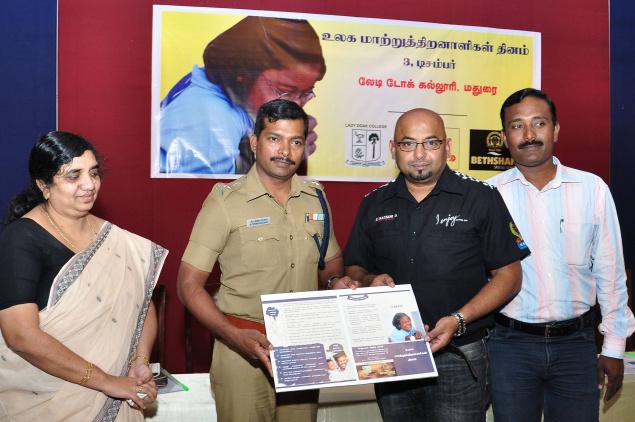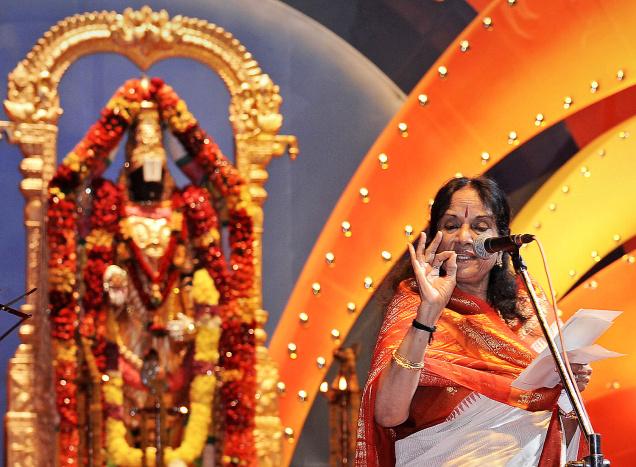Nirvikalpa Natarajan of Chennai has notched up so many formidable accomplishments that her peers in medicine find it hard to believe that she is only 30 years old.
Those accomplishments include performing hundreds of surgeries, and treating even more hundreds of patients in India, Ireland and Britain. Dr Nirvikalpa is a practitioner of oral and maxillofacial surgery, one of a only handful of women in her field.
That distinction, of course, attracts praise from her colleagues at Chennai’s Apollo Hospital. It sometimes also invites envy. The envy invariably comes from less accomplished people, and it takes the form of whispers that perhaps Dr Nirvikalpa is too young for her position, or that she’s a relentless seeker of success.
Such behind-the-back criticism doesn’t faze her. Dr Nirvikalpa has a simple credo: “My work speaks for itself.” It does indeed. In recognition of her work, she received a hugely prestigious award, the Dr M. S. N. Ginwalla Trophy for the Best Scientific Paper at the 37th National Conference of the Association of Oral and Maxillofacial Surgeons of India, last Saturday evening.
More than a thousand surgeons from across India and from abroad had gathered for the conference at the Hyderabad International Convention Centre, a facility where the auditoriums are so cavernous that a speaker on the stage can seem dwarfed.
But not Dr Nirvikalpa. Attired in a striking green sari, the tall surgeon with flowing black hair glided to the podium and gave a 10-minute oration that had the audience riveted. One could be forgiven for mistaking her for a fashion model.
She was so lucid that even an attendee unfamiliar with the field’s lingo could follow her. The way she projected her voice, and the manner in which she highlighted the salient points of her address on a screen presentation, spoke of her self-confidence. That self-confidence has been hard won. A graduate of Government Dental College in Mumbai, Dr Nirvikalpa went on to do post-graduate work at Saveetha University in Chennai. She has received two memberships at the Royal College of Glasgow, and a coveted fellowship from Royal College in Ireland. She has been selected for a fellowship in cranio-maxillofacial surgery in Hannover in 2013.
Oral and maxillofacial surgery is a unique specialty that deals with conditions, defects and esthetic aspects of the mouth, jaws and face. It is especially relevant in India, which has the world’s largest number of traffic accidents; such accidents often result in severe traumas to the head and face.
What sets oral and maxillofacial surgeons apart from other specialists is their in-depth understanding of the skeletal and dental framework of the face. Much as the foundations of a building are made from iron, the foundations of the face are its bones and teeth.
Knowing the subtleties of this allows them to deal effectively in areas of cosmetic jaw surgery, facial trauma, craniofacial surgery, oral pathology, temperomandibular joint surgery, oral implantology and oral cancer.
“Oral and maxillofacial surgery is ‘The Next Big Thing,’” Dr Nirvikalpa says. Why? Because it’s a super specialty in medicine, and because the technologies are advancing so rapidly that opportunities to serve bigger cohorts of people are increasing exponentially. Moreover, there’s a shortage of surgeons with requisite experience and skills in the field.
It is a multi-disciplinary field, one that requires surgeons like Dr Nirvikalpa to be deeply familiar with neuroscience, ophthalmology, dentistry and audiology, among other fields of medicine. It is a field that pays surgeons far more in the West than in India, and Dr Nirvikalpa could have just as easily joined the 400,000 physicians of Indian origin who practice medicine in the United States, Britain, Europe and Australia. But she chose to work in her homeland because of the rich diversity of patients, because of patients’ needs, and because, ultimately, “one has to give back to one’s own country.”
There’s also the fact that India, an economic giant, sorely needs more doctors. (Some 45,000 doctors graduate from the country’s medical school each year, and about 3,000 of these go abroad annually.) Even though India is a major supplier of physicians and nurses to industrialised countries, there are just about 600,000 registered allopathic physicians in India, according to the Union Ministry of Health. That translates into one doctor per every 2,000 of the population.
There’s one thing more that keeps Dr Nirvikalpa in India. That’s the benevolence of the man who founded Apollo Hospitals nearly 30 years ago, a cardiologist named Dr Prathap Chandra Reddy. Both Dr Reddy, and Apollo’s director of medical services, Dr N Satyabhama, serve as her
mentors.
Another mentor is Dr Vinod Narayanan, who is highly experienced in oral and maxillofacial surgery, and who is a consultant at Apollo Hospital. Dr Nirvikalpa also looks to Preetha Reddy, managing director of Apollo Hospitals, which has 55 institutions around India, and is one of the world’s largest healthcare systems.
So is she a relentless seeker of success? It’s not a question that Dr Nirvikalpa Natarajan will answer. After all, her work speaks for itself. And the fact that she’s still single at 30 also speaks for itself. One is tempted to add that she’s a very eligible 30-year-old surgeon. Anyone aspiring to change that situation should be prepared to put up with Dr Nirvikalpa’s 18-hour work days, seven days a week, and the fact that she shows no signs of slackening.
Pranay Gupte is an author and veteran journalist
source: http://www.KhaleejTimes.com / Home> International / by Pranay Gupte / December 04th, 2012

